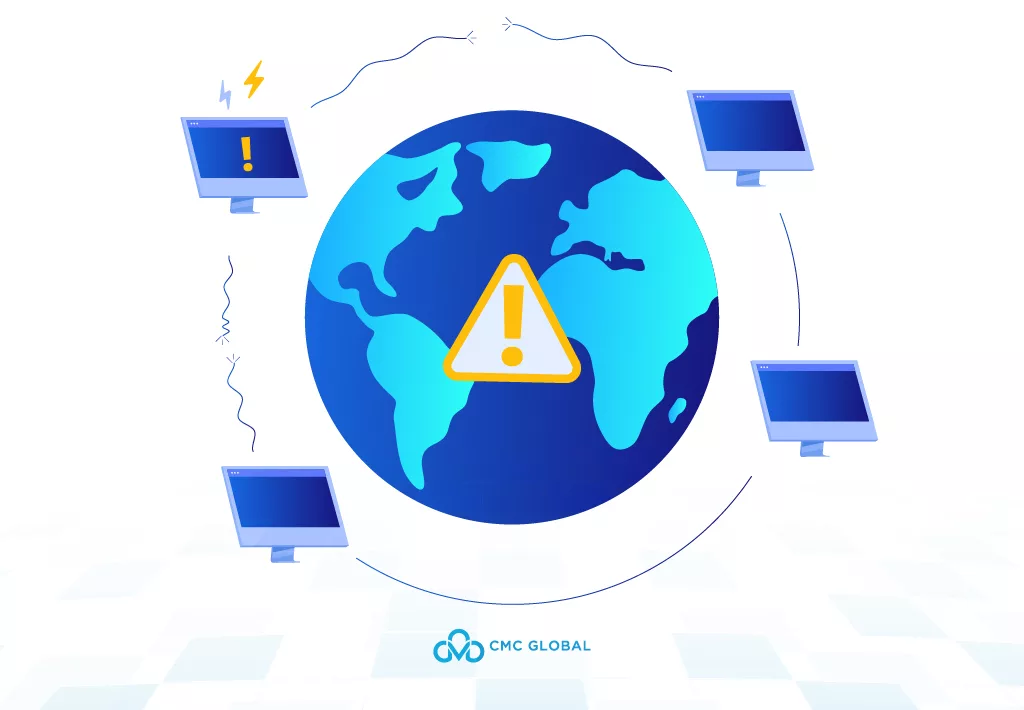What we know for sure, after 2 AI reports from McKinsey is that, great power comes great responsibility. AI has proven to bring out so much advantages for those executing it right, making the big bigger, richer with more edges than ever. But, what about the other end of the funnel? For companies that still aren’t acknowledging most AI risks, they, it fact, modestly increased mitigating a handful of them without being aware of it.
That’s why CMC Global acknowledge the importance of managing AI risks.
The AI risk situation
The McKinsey survey findings suggest that a minority of companies recognize many of the risks of AI use, and fewer are working to reduce the risks, as was true in 2019. Cybersecurity remains the only risk that a majority of respondents say their organizations consider relevant. Overall, the share of respondents citing each risk as relevant has remained flat or has decreased, with the exception of national security. Yet some of the less commonly considered risks are the ones in which we see increasing mitigation.
National security and physical safety are more commonly addressed now than in 2019. Responses also indicate that companies increasingly manage risks related to AI explainability.
AI high performers remain more likely than others to recognize and mitigate most risks. For example, respondents at high performers are 2.6 times more likely than others to say their organizations are managing equity and fairness risks such as unwanted bias in AI-driven decisions
A larger share of respondents than last year says their organizations are actively working to mitigate risks that are not commonly considered relevant

Above are the risks that organizations consider relevant, divined by the percentage of respondents. The color is coded as follow:
- White: 2019
- Blue: 2020
And here are the risks that organizations are working to mitigate in 2021

The COVID-19 effect on managing AI risks
Despite the economic challenges that pandemic-mitigation measures have caused for many companies, those seeing the most value from AI are doubling down on the technology.
The companies seeing significant value from AI are continuing to invest in it during the pandemic. Most respondents at high performers say their organizations have increased investment in AI in each major business function in response to the pandemic, while less than 30% of other respondents say the same.
By industry, respondents in automotive and assembly as well as in healthcare services and pharmaceuticals and medical products are the most likely to say their companies have increased investment.

Vertically, you can see that Healthcare system are the one with most changes (as of COVID) in using AI, followed by automotive and assembly. The patterns in other industries are quite the same, with “no changing” taking up a dominant half and the other half spilt up quite equal to “decreased” and “increased”

Generally, respondents from companies that have adopted more AI capabilities are more likely to report seeing AI models misperform amid the COVID-19 pandemic than others are. Responses indicate that high-performing organizations, which tend to have adopted more AI capabilities than others, are witnessing more misperformance than companies seeing less value from AI. These high-performing organizations’ models were particularly vulnerable within marketing and sales, product development, and service operations – the areas where AI adoption is most commonly reported.
Respondents from AI high performers most often say their models have misperformed within the business functions where AI is used most

As we all know, COVID-19 has rapidly moved consumers and businesses to digital channels. Throughout the pandemic, we’ve seen organizations across sectors adopting and scaling AI and analytics much more rapidly than they previously thought possible. Many organizations have worked with their analytics teams to update demand patterns, reconsider supply chains, build scenario plans around resource needs, and enable automation in factories and other industry settings where workers may need to distance and have fewer people on-site.
For example, a global pharmaceutical company linked multiple COVID-19 scenarios to develop a view of supply-and-demand issues for each of their products by country and integrated that view into their regular finance- and operations-planning processes. In some cases, organizations’ short-term analytics solutions weren’t incredibly precise, but executives realized that they were good enough to give them more direction than they otherwise would have had.
Many companies are now turning to longer-term opportunities. With more data from digital channels available, improved recommender systems, for example, can enable better customer experience, more personalized content, and automated digital customer service.
So it’s not surprising that the pandemic has spurred more investment in AI capabilities. The companies currently underperforming in AI clearly aren’t investing as much and risk falling further behind AI leaders.




